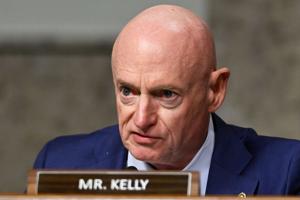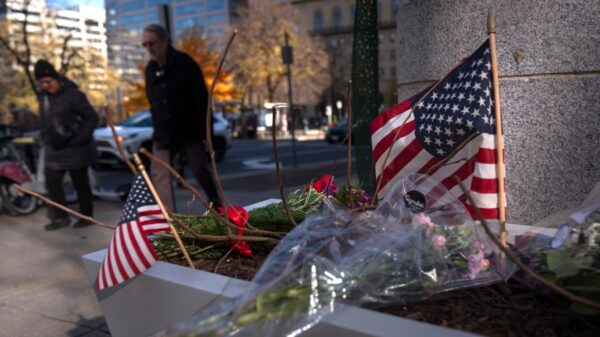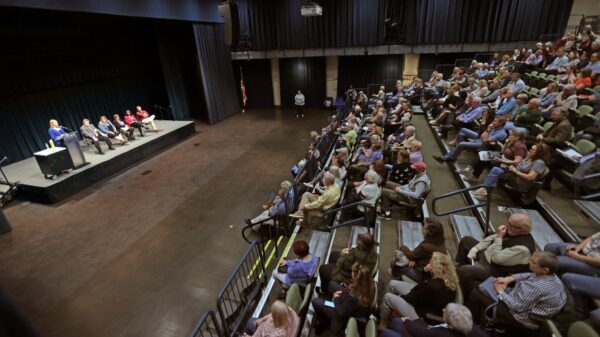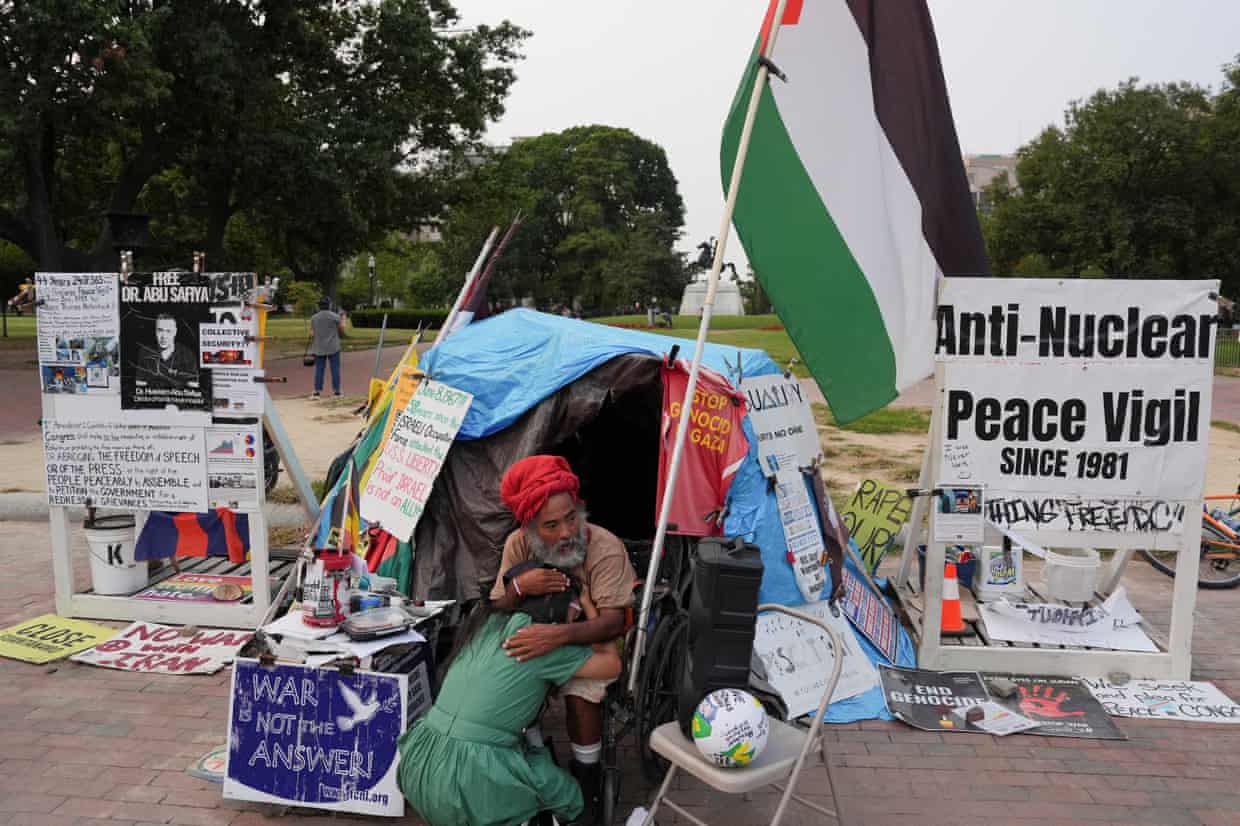Law enforcement officials dismantled a peace vigil that had stood in front of the White House for over four decades, following orders issued by Donald Trump just two days prior. The vigil, established in 1981 by William Thomas, aimed to promote nuclear disarmament and an end to global conflicts, earning its place as the longest continuous anti-war protest in the United States.
The vigil was located in Lafayette Square, directly across from the White House gates. For years, dedicated volunteers maintained the site to prevent its removal. The decision to dismantle the vigil came after a question posed to Trump by Brian Glenn, a correspondent for the conservative network Real America’s Voice, during a press interaction on Friday. Glenn referred to the vigil as a “blue tent” that had evolved from an anti-nuclear message to a broader critique of America and Trump.
Trump, seemingly unaware of the vigil’s significance, instructed his staff, “Take it down, right now.”
Detainment and Reactions
On the morning of March 5, 2023, officers arrived at the vigil around 06:30 to inform volunteers that they had thirty minutes to clear the area. Will Roosien, a 24-year-old volunteer, recounted to the Washington Post his refusal to comply, leading to his detainment as officers began dismantling the tent. He expressed his dismay, stating, “This is a disgrace, and you should all feel ashamed. Twenty-four hours a day, seven days a week, for 44 years, someone has sat here advocating for human rights and peace.”
Philipos Melaku-Bello, the vigil’s longest-serving steward at 63 years old, also voiced his concerns. He noted that volunteers had partially rebuilt the vigil shortly after its dismantling and anticipated a legal battle over its status. Melaku-Bello emphasized the distinction between a vigil and encampments, asserting, “I don’t have a bed. I have signs, and it is covered by the constitutional right to freedom of speech and freedom of expression.”
Political Context and Implications
The removal of the vigil aligns with broader policing strategies implemented by the Trump administration in Washington, D.C. Earlier in March, Trump had issued an executive order aimed at the “beautification” of the US capital, which included directives for the removal of encampments. This order raises questions about the treatment of long-standing demonstrations versus temporary encampments.
The action against the vigil follows a letter from Jeff Van Drew, a Republican congressman from New Jersey. In his correspondence to the Department of the Interior, which oversees US national parks, Van Drew criticized the vigil as a safety hazard and an eyesore, claiming it misuses public land. He argued, “Nothing in the constitution guarantees the right to erect permanent structures and occupy public land day after day, year after year.”
Many supporters and advocates for peace view the dismantling of the vigil as a significant infringement on free speech and expression. The ongoing developments around this historic protest reflect larger tensions regarding activism, public space, and the rights of citizens to express dissent in the heart of the nation’s capital.
The Associated Press contributed to this report. As the situation evolves, the legal ramifications and public sentiment surrounding the vigil’s removal will likely continue to unfold, potentially influencing future demonstrations and policies in Washington, D.C.





































































